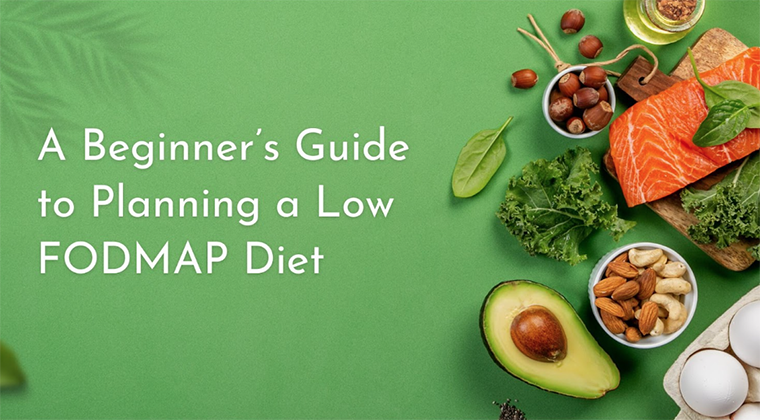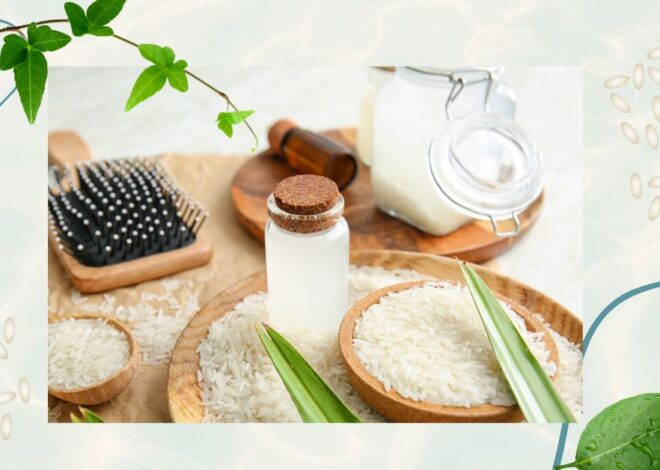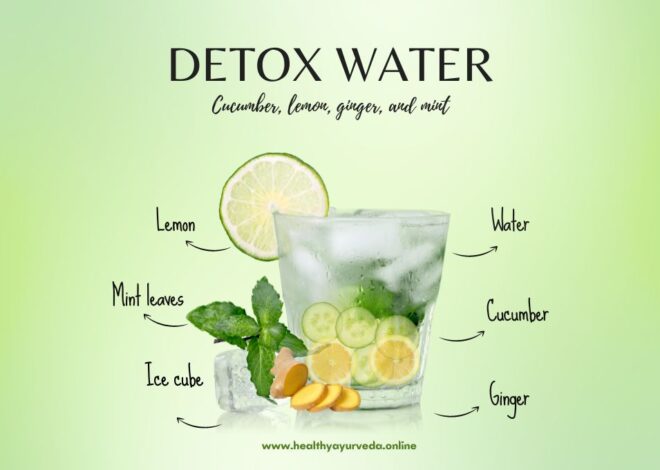
Low FODMAP Diet Food List: What to Eat and What to Avoid
Low FODMAP Diet Food List If you suffer from digestive issues, you may have heard of the low FODMAP diet. FODMAP stands for Fermentable Oligosaccharides, Disaccharides, Monosaccharides, and Polyols, which are short-chain carbohydrates that can be difficult to digest for some people. The low FODMAP diet is a temporary elimination diet that helps to identify food triggers that may cause digestive discomfort.
In this article, we will provide a comprehensive low-FODMAP diet food list, including what to eat and what to avoid. We will also cover the benefits of a low FODMAP diet and tips for getting started.
Benefits of a Low FODMAP Diet
The low FODMAP diet is effective in reducing symptoms of irritable bowel syndrome (IBS), which affects up to 20% of the population. The diet involves eliminating high FODMAP foods for a few weeks, then slowly reintroducing them to identify which foods are causing symptoms. By doing so, individuals can tailor their diet to their unique needs and reduce the frequency and severity of symptoms.
Additionally, a low FODMAP diet is helpful for individuals with inflammatory bowel disease (IBD) and other gastrointestinal disorders. However, it is essential to work with a healthcare provider or registered dietitian before starting a low FODMAP diet to ensure it is appropriate for your individual needs.
Low FODMAP Foods to Eat
When following a low FODMAP diet, it is important to focus on foods that are low in FODMAPs. Some of the best low-FODMAP foods to eat include:
Proteins: meat, poultry, fish, eggs, tofu, tempeh, and some nuts and seeds
Fats: oils, butter, and some nuts and seeds
Carbohydrates: rice, quinoa, oats, gluten-free bread and pasta, some fruits (e.g., bananas, blueberries, grapes, oranges, and strawberries), and some vegetables (e.g., carrots, cucumber, lettuce, tomatoes, and zucchini)
Beverages: water, tea, coffee, and some non-dairy milk (e.g., almond milk, coconut milk, and rice milk)
It is important to note that portion sizes and combinations of low FODMAP foods can impact symptoms. For example, a large portion of gluten-free bread or a combination of high-FODMAP vegetables may cause discomfort. Working with a registered dietitian can help you to navigate these nuances.
High FODMAP Foods to Avoid
While following a low FODMAP diet, it is important to avoid high FODMAP foods that may trigger symptoms. Some of the high FODMAP foods to avoid include:
Proteins: beans, lentils, chickpeas, and some nuts and seeds (e.g., cashews, pistachios)
Fats: some nuts and seeds (e.g., almonds, hazelnuts, and pecans)
Carbohydrates: wheat, barley, rye, some fruits (e.g., apples, cherries, mangoes, and pears), and some vegetables (e.g., asparagus, Brussels sprouts, garlic, onions, and mushrooms)
Beverages: beer, wine, and some fruit juices (e.g., apple, pear, and mango)
It is important to read food labels and be aware of hidden sources of high
It is very common to come across a friend, family, or neighbour complaining of stomach upset after eating specific food items. Digestive upset and distress caused by certain food types in the offices is a common problem globally.
When one has digestive upset after eating some foods, their mood is significantly ruined. This also leads to their day getting ruined. Many people are ready to adopt any solution available to prevent digestive upset.
After numerous studies, a link between FODMAPs and digestive distress after eating was established. This created the avenue for avoiding foods that contain FODMAP to avoid getting digestive upset after eating.
Low FODMAP diets have been studied keenly by several institutions to get the best diet plans. Monash University developed the Monash University FODMAP application to help people plan their low FODMAP diets. The diet plans in the app include a low FODMAP foods list, a shopping list, recipes, etc.
Many people are seeking to plan and start their low FODMAP diets. Before embarking on this, there are a couple of basic guidelines and information that one should be conversant with.
What are FODMAPs?
The narrative about reducing FODMAP in your diet to prevent digestive upset is popular. However, very few people understand what FODMAPs are.
FODMAPs are carbohydrates. They are found in certain foods. The name FODMAP is an acronym for the specific components in carbohydrates.
The letters in the acronym represent:
Fermentable – This means that the components are broken down by certain bacteria in the intestinal tract.
Oligosaccharides – Oligosaccharides consist of two words. The first word is Oligo, which means few. The second word is saccharides, which is a type of sugar. The molecules consist of individual sugars that are chain-linked together.
Disaccharides – The word consists of two words. The words are Di, which means two, and saccharides which is a type of sugar. It is a twin sugar molecule.
Monosaccharides – The word consists of two words. The words are mono, which means one, and saccharides which is a type of sugar. It is a singular sugar molecule.
Polyols – They are alcohol sugars. It is vital to keep in mind that they cannot intoxicate a person when consumed.
A look at the components in FODMAP shows that they consist of four main groups of saccharides. All the saccharides are a type of carbohydrate referred to as short-chain. These carbohydrates easily ferment in the colon if they are poorly digested.
During the fermentation process, a lot of water is drawn in from the rest of the body. The fermentation process of these carbohydrates produces gases. The gases are methane, carbon dioxide, and hydrogen. These gases cause a lot of expansion and contraction in the digestive tract. The stretching and expansion cause bloating, pain, abdominal distension, and other symptoms. These symptoms are what is felt as digestive upset.
Now that one is aware of how FODMAP cause digestive upset, you can work on eliminating FODMAP from your diet till you develop some resistance.
Low FODMAP Diet
A low FODMAP diet is structured and planned with foods that contain low levels or no FODMAP to avoid getting digestive distress. While low FODMAP diets are primarily used to help with digestive distress problems, they also help in other conditions such as:
- Irritable Bowel Syndrome (IBS)
- Small Intestinal Bacterial Overgrowth (SIBO)
- Migraines caused by certain meals
A key factor to keep in mind when adopting a low FODMAP diet is that it cuts out a lot of foods. Due to the number of foods that it cuts out, this diet cannot be a permanent thing. Low FODMAP diets are temporary treatment plans.
After a while of using a low FODMAP diet, one slowly reintroduces some foods that contain FODMAP in their meals. This slow reintroduction allows one to know the level at which they can eat foods with FODMAP without causing digestive distress. Once one identifies this level, they can embark on always monitoring their FODMAP intake level to ensure it does not go beyond what their body can handle.
Stages of Low FODMAP Diets
A low FODMAPs diet has three stages
1. Elimination
The first stage of a low FODMAP diet is elimination. This stage entails cutting out all foods that contain FODMAP in your diet. This stage lasts for 3-9 weeks depending on one’s preferences.
2. Reintroduction
The second stage of a low FODMAP diet entails reintroducing foods with FODMAP into one’s diet. As stated earlier, the reintroduction of FODMAP allows one to know the FODMAP intake level that their body can handle. This concept is similar to that used by lactose-intolerant people.
Knowing one’s a tolerable level of FODMAP intake allows you to have meals without the restrictions that come with eliminating FODMAP from one’s diet.
When reintroducing FODMAPs into your diet, you should do this strategically. You should reintroduce low-FODMAP foods one group at a time. This also allows you to note FODMAP food groups that affect your body a lot.
3. Custom FODMAP Diet
Initially, a low FODMAP diet entails cutting off all foods with FODMAP from your meals. However, with the second stage of FODMAP diets, you get to know the FODMAP food groups that your body can handle.
Once you are aware of the FODMAP food groups that your body can handle and those that it cannot handle, you create a custom diet plan. The custom diet plan will include FODMAP foods that do not cause digestive distress to you.
Low FODMAP Recipes
Numerous recipes offer low FODMAP diets without compromising the nutritious value of the foods. The Monash University FODMAP app houses several low-FODMAP foods and recipes you can use to make meals.
You Might Also like- Include these 5 Ayurvedic things in the diet to digest food
Conclusion-:
Low FODMAP diets are the recommended solution for people who get digestive distress after eating certain foods. When looking to get on a low FODMAP diet, you can get a diet that is specifically tailored for you from a nutritionist or dietician. You can also get a custom diet plan from the available accredited FODMAP apps. This will ensure you get the best results from your new diet.



